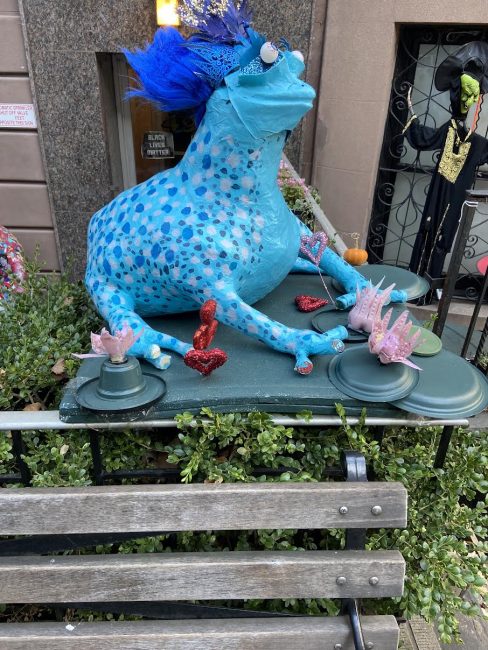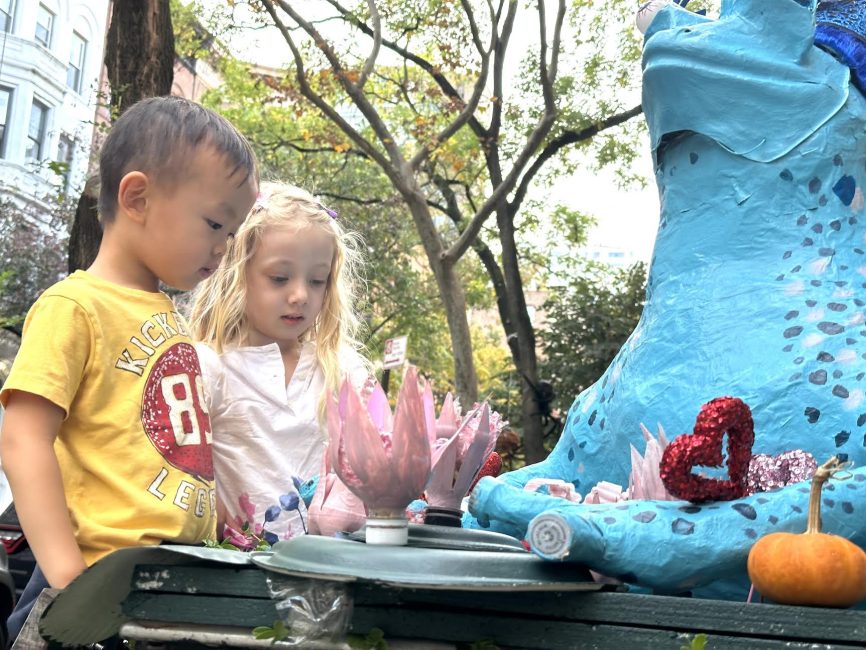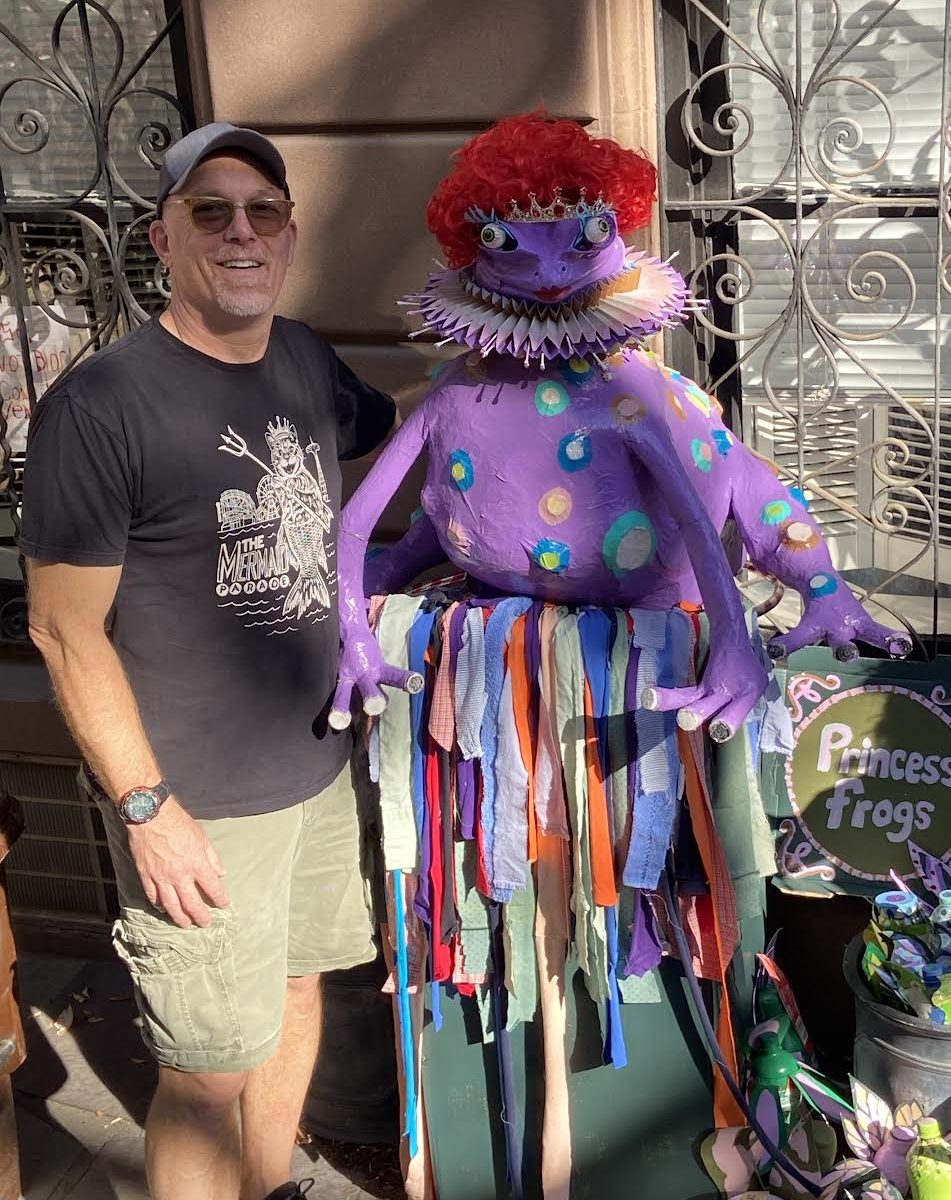To my surprise and delight, I won FIRST PRIZE in West 69th Street’s Halloween Decorating Contest for my “Princess Frogs” display.
Everything, except for the wigs and crowns, was made from recycled materials. I used water bottles, pizza boxes, FedEx boxes, damaged comic books, broken lampshades, paper towels, toilet paper rolls, New York Times newspapers, bubble wrap, coffee cans, lids, and packing foam.

As I collected single-use plastics—such as water bottles, take-out food containers, cups, straws, and food packages—for two months, I was truly opened to the staggering amount of trash I contribute to the environmental crisis.

I created a “Single-Use Swamp” using plastic bottles and cardboard packaging, which I painted to resemble foliage. The extent of single-use plastic consumption is frightening and overwhelming. Like most people, I’m horrified by the billions of plastic items choking our oceans, lakes, and rivers. Recently, I’ve been reading about the harmful effects of Bisphenol A (BPA) on our endocrine systems. I encourage others to research this topic thoroughly, as it requires more than just a quick Google search to understand fully.

Sitting atop my vision of a lily pond—crafted from old T-shirts, pillowcases, and towels—are Queen Elizabeth I and Wonder Woman.

Upon seeing my display, I was overjoyed when a young girl passing by exclaimed, “Princess Frogs!”. Her mother informed me that her daughter loves to dress up as a princess. It warms my heart to know that my target audience appreciates my work!
Janet and Rosetta Van der Voort, born in the 1800s, were two wealthy sisters whose father rarely let them leave the house unaccompanied. The one place they were allowed to visit was Central Park’s Wollman Rink, where they went ice skating in the winter.
The two sisters never married, were lifelong best friends, and died a few months apart. Since their death, their ghostly spirits have been seen periodically skating together on the Central Park Pond, wearing the same red and purple outfits they wore over 100 years ago.
Divabetic pays tribute to the sisters’ spirits, hoping to encourage you to indulge in the creativity associated with Halloween instead of candy. Halloween’s record-breaking sugar consumption and its detrimental effects on overall health are scarier than any ghost story. It’s been reported that consumers gobbled up a record $36.9 billion in candy, gum, mints, chocolate, and other confections in 2021.
High intakes of dietary sugars in the setting of a worldwide pandemic of obesity and cardiovascular disease have heightened concerns about the adverse effects of excessive consumption of sugars. The American Heart Association suggests limiting adding sugars to no more than 100 calories per day (about 6 teaspoons or 24 grams) for most adult women and no more than 150 calories per day (about 9 teaspoons or 36 grams of sugar) for most men.
Credits Producer: Max Szadek Writers: Max Szadek, Wendy Radford, Lorraine Brooks Voice Actors: Max Szadek, Verna Henry, Lauren Ricks Graphic Designer: Max Szadek




